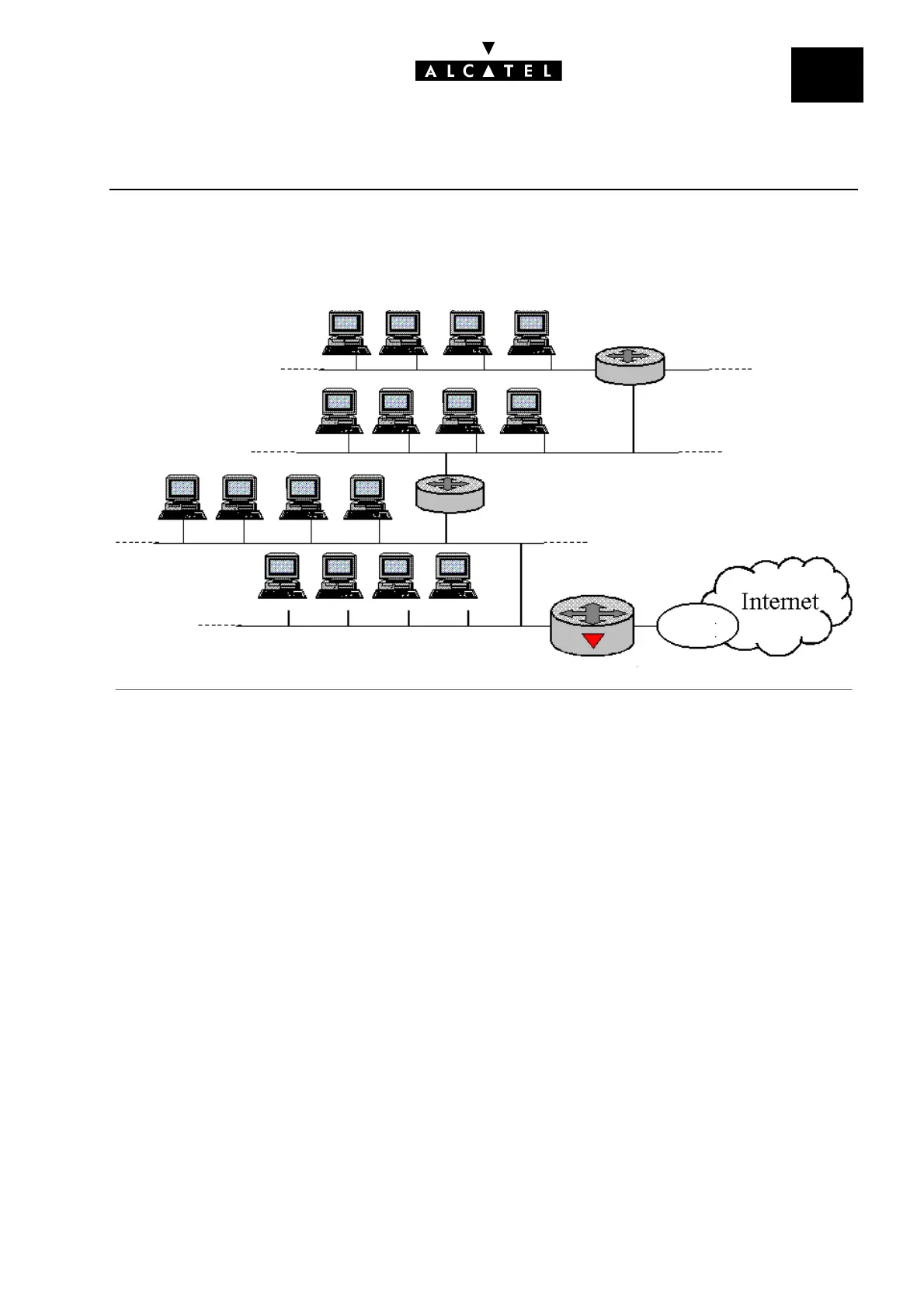File
3
LAN SERVICESE-SERVER : INTERNET APPLICATIONS
Ed. 04 7/8Réf. 3EH 21000 BSAA
- "Note": comment for identifying the route entered.
Exemple : Configuration of the routing table with three sub-networks present on the LAN.
In the architecture corresponding to the diagram above, routers 1 and 2 must be entered into the
OmniPCX routing table so that requests destined for elsewhere than the Internet can be rerouted
to the LAN. Two entries will need to be added to the "Additional Routes" table:
• a route for sub-network 155.132.2.0 with the following entries: 155.132.2.0 (Destination), IP
address of router 2 (Gateway), 255.255.255.0 (Mask).
- a route for sub-network 155.132.3.0 with the following entries: 155.132.3.0 (Destination), IP
address of router 1 (Gateway), 255.255.255.0 (Mask).
Configuring the client station
To bring in the OmniPCX LAN services, you have to change the TCP/IP configuration on the client sta-
tions at two levels:
- reconfiguration as DHCP client. This is only necessary where there was no DHCP server on the LAN
beforehand and OmniPCX is configured as a DHCP server. If the client station keeps a fixed IP ad-
dress, then the OmniPCX IP address must be entered as the default gateway;
- Insertion of the domain name and of the OmniPCX IP address as the DNS service.
Exemple : Configuring a Windows 98 client station
1. Right-click the "Network Neighborhood" icon on the Windows desktop.
2. Choose "Properties" from the context-sensitive menu that pops up.
Sub-network 155.132.3.X
Sub-network 155.132.2.X
Router 1
Router 2
Sub-network 155.132.1.X
ISP
OmniPCX

